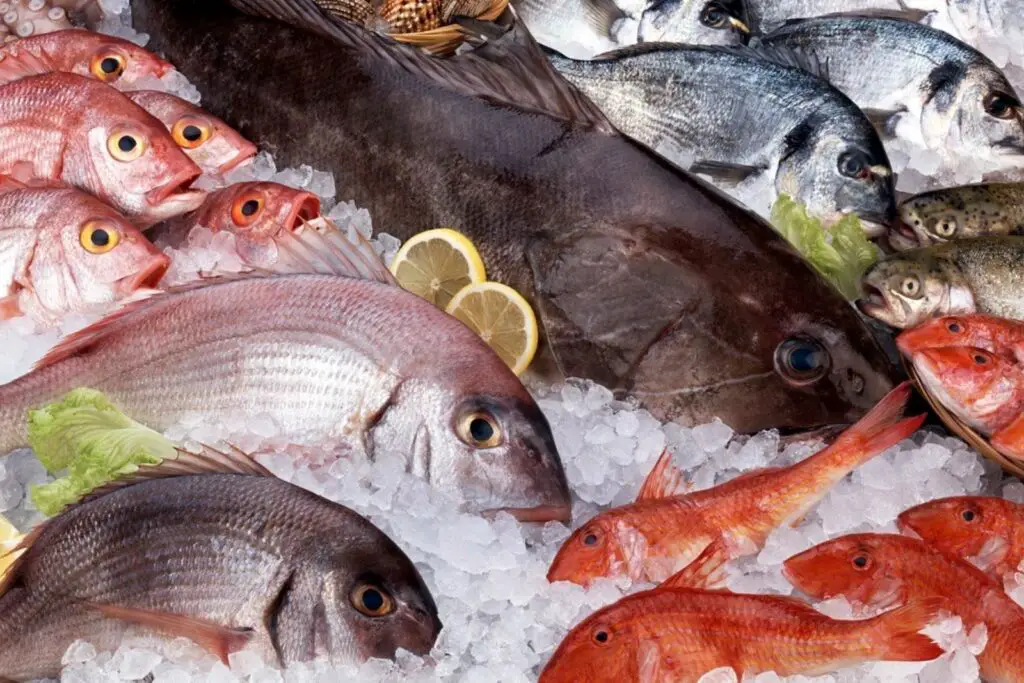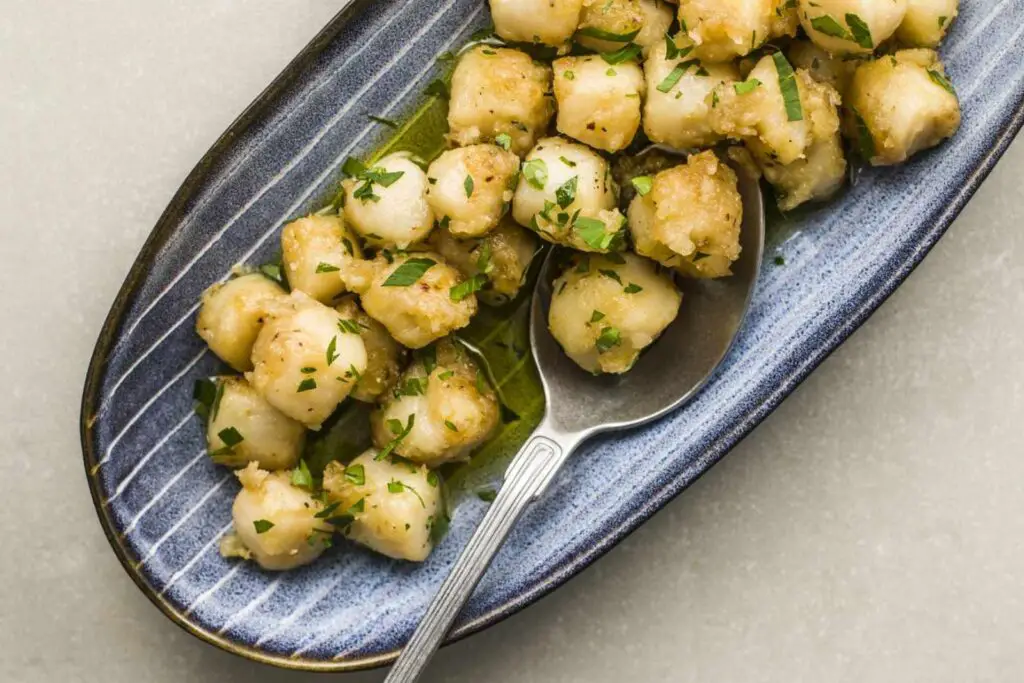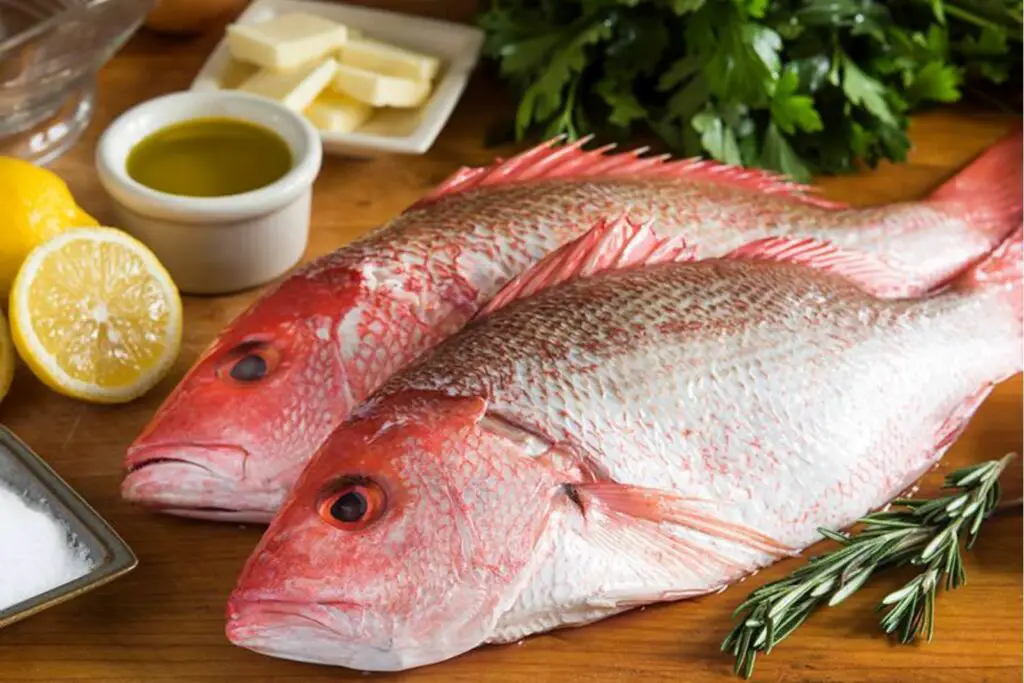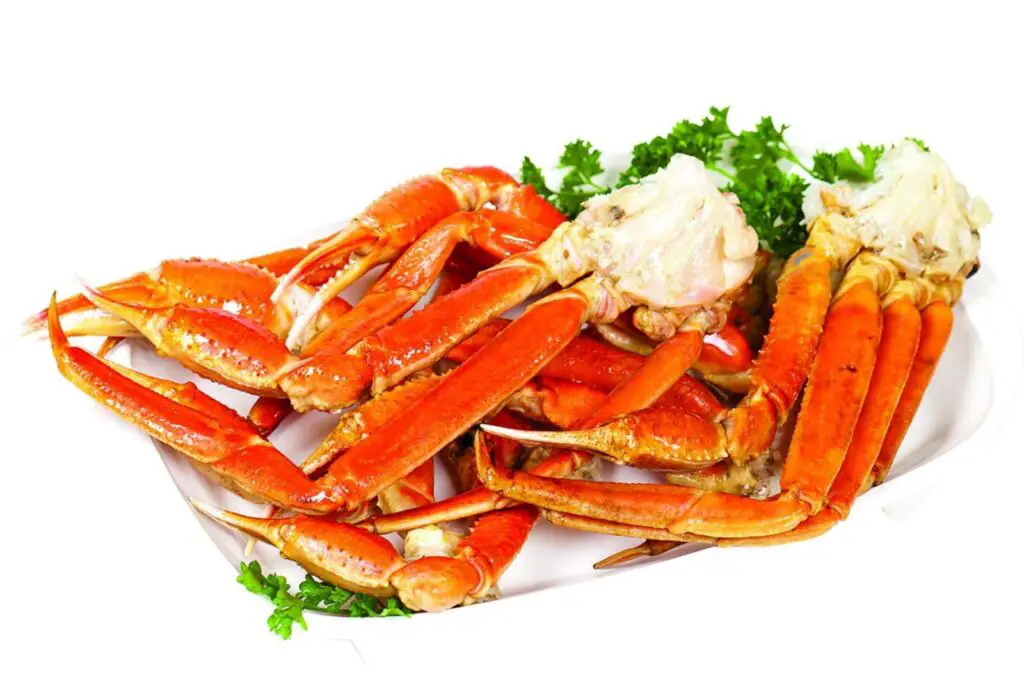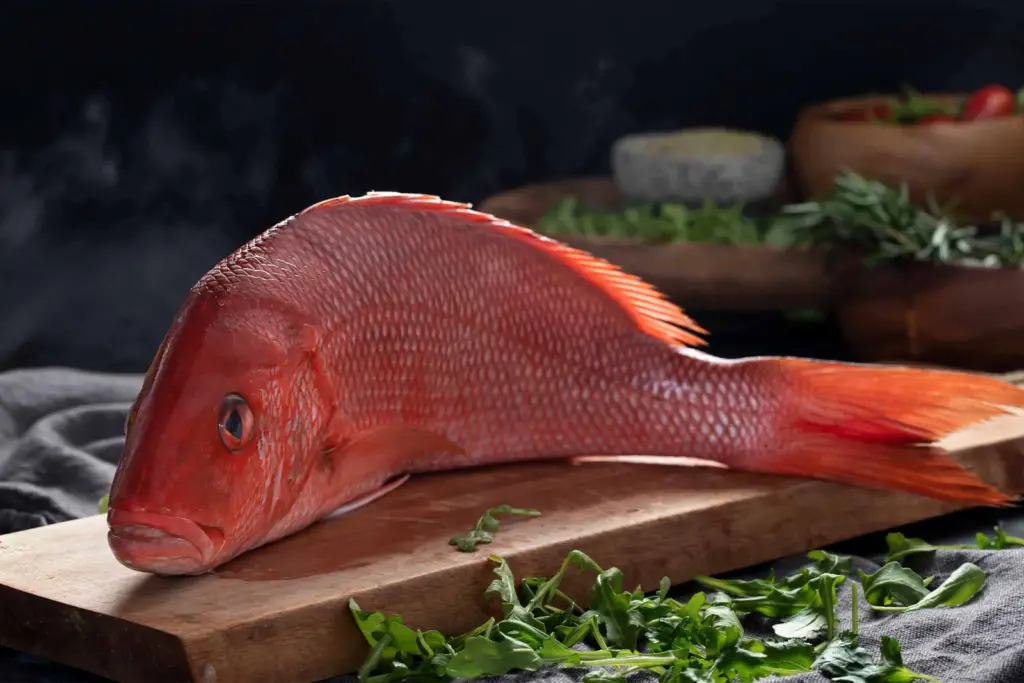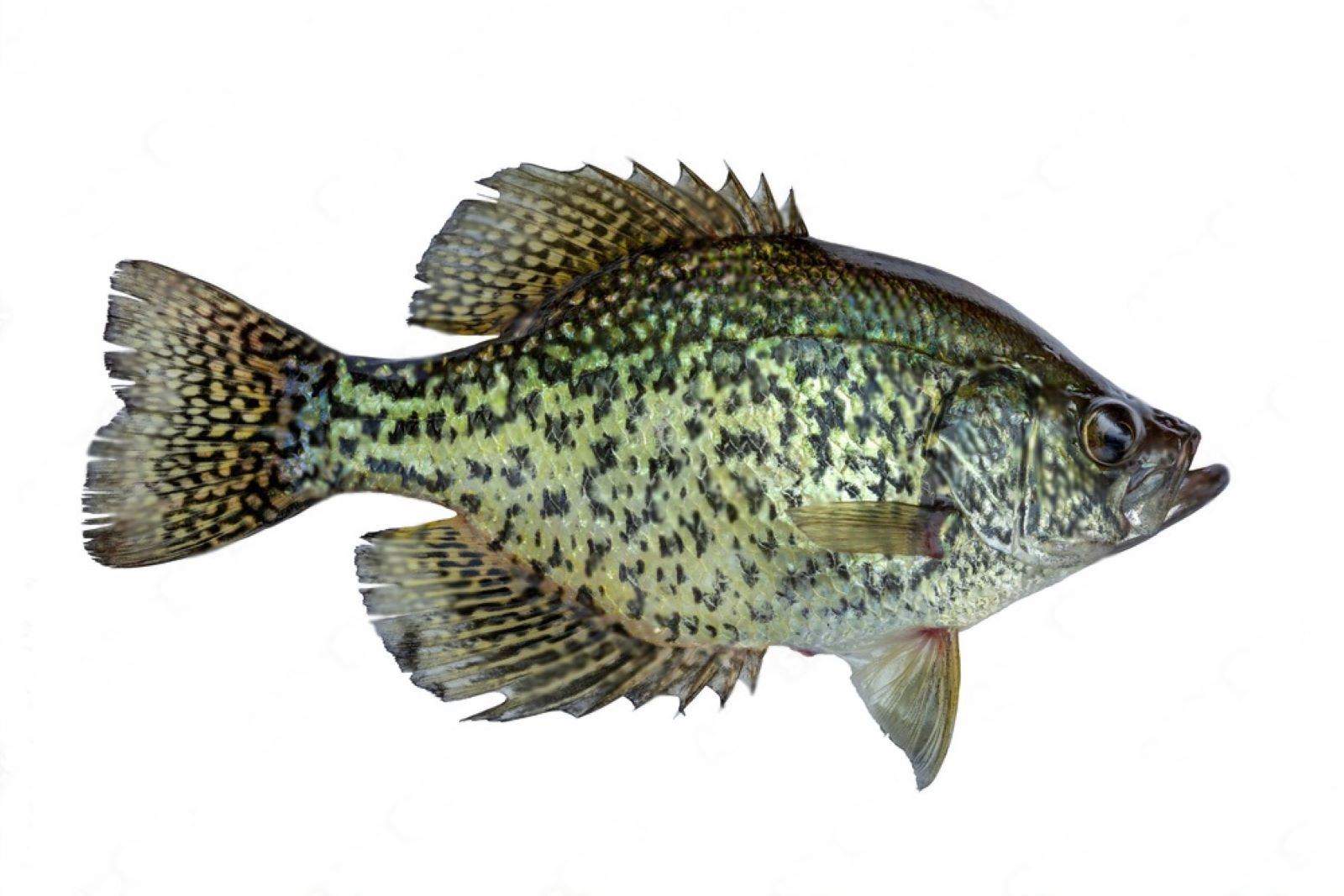
Crappie fish, also known as calico bass or speckled perch, are a popular freshwater fish species among anglers. They are prized for their delicate flavor and firm, white flesh. Freezing crappie fish allows you to preserve their taste and enjoy them at a later time. By following a few simple steps, you can freeze crappie fish while maintaining their quality and freshness. This article provides a step-by-step guide on how to freeze crappie fish to ensure they retain their texture and flavor for future use.
Here’s a guide on how to freeze crappie fish:
Step 1: Select fresh crappie fish
To ensure the best results when freezing crappie fish, it’s crucial to start with fresh fish of high quality. Here’s why:
- Optimal flavor and texture: Fresh crappie fish have a delicate flavor and firm, white flesh. Choosing fish that are fresh guarantees that you’ll capture the true essence of their taste and texture when you freeze them.
- Visual cues: When selecting crappie fish, pay attention to their appearance. Look for fish with clear, bright eyes, as cloudy or dull eyes can indicate less freshness. Shiny scales are also a good sign of freshness, while dull or discolored scales may suggest older fish. Fresh crappie fish should have vibrant colors and an overall healthy appearance.
- Aroma test: Another way to determine the freshness of crappie fish is through their scent. Fresh fish should have a mild, clean aroma reminiscent of the sea. Avoid fish with strong, unpleasant odors, as this could indicate decomposition.
- Minimizing deterioration: Crappie fish begin to deteriorate as soon as they are caught due to bacterial growth and enzymatic activity. Freezing the fish as soon as possible after catching them helps slow down these processes and preserves their freshness for an extended period.
Is it better to freeze crappie fish in water or without water?
It is generally better to freeze crappie fish without water, as freezing them in water can negatively impact the texture and taste of the fish. Freezing fish in water can cause the fish to absorb excess moisture and become mushy upon thawing. It is recommended to package the fish in airtight freezer bags or containers to prevent air exposure and freezer burn, rather than submerging them in water.
Step 2: Clean and prepare the fish
Properly cleaning and preparing the crappie fish before freezing is essential to maintain their quality and prevent any undesirable flavors or odors. Here’s why it’s important and how to do it:
- Scale removal: Start by removing the scales from the crappie fish. Scales are not only unappetizing when cooked, but they can also trap bacteria and impurities. Scaling the fish ensures a clean and pleasant eating experience.
- Gutting the fish: To gut the crappie fish, make a small incision just below the gills and continue cutting down towards the vent. Carefully remove the innards, taking care not to puncture the intestines. Gutting the fish helps eliminate any potential sources of off-flavors and allows for better freezing and storage.
- Gill removal: After gutting, it’s advisable to remove the gills. The gills can deteriorate quickly, leading to a fishy taste and odor. Gently cut or pull out the gills, ensuring the fish is completely clean.
- Rinsing under cold water: Thoroughly rinse the crappie fish under cold running water. This step helps remove any residual blood, slime, or impurities that may be present on the surface or inside the fish. Proper rinsing contributes to better hygiene and taste.
- Drying the fish: After rinsing, pat the crappie fish dry using paper towels. Removing excess moisture helps prevent ice crystals from forming during freezing and maintains the texture of the fish.
Should I blanch crappie fish before freezing them?
Blanching crappie fish before freezing is not necessary but can be done to help preserve their quality. Blanching involves briefly immersing the fish in boiling water, followed by an immediate plunge into ice water to halt the cooking process. This technique can help to retain the fish’s flavor, texture, and color during freezing. However, if you prefer to skip the blanching step, you can still freeze the fish directly, ensuring proper packaging to maintain freshness.
Step 3: Fillet the fish
Fileting a crappie fish is an essential step in preparing them for freezing. It involves removing the bones and creating boneless fillets that are convenient to store and cook. Here’s why filletting is important and how to do it:
- Bone removal: Fileting a crappie fish allows you to remove the bones, resulting in boneless fillets that are easier to handle and consume. Fish bones can be a choking hazard and can interfere with the eating experience. Removing the bones ensures a safe and enjoyable meal.
- Yield maximization: Fileting the fish allows you to maximize the amount of usable flesh. By carefully cutting along the backbone and removing the fillets, you can separate the desirable meat from the rest of the fish. This ensures that you make the most out of the crappie and minimize waste.
- Scales and debris removal: Filletting also provides an opportunity to further clean the fish by rinsing the fillets. Rinse the fillets under cold running water to remove any remaining scales, slime, or debris that might have been missed during the initial cleaning process. This step helps ensure that the fillets are clean and free from any unwanted particles.
Here’s a step-by-step guide to filletting a crappie fish:
- Using a sharp knife, make a small incision behind the gills of the crappie fish.
- Run the knife along the backbone, cutting through the flesh towards the tail in a smooth, controlled motion.
- Lift the fillet away from the backbone, working your way from the head to the tail, keeping the knife blade close to the bones to avoid excessive wastage.
- Repeat the process on the other side of the fish to obtain the second fillet.
- Once both fillets are removed, inspect them for any remaining bones and remove them using tweezers or fish bone pliers.
- Rinse the fillets under cold running water to remove any scales, slime, or debris.
- Pat the fillets dry with paper towels.
Step 4: Wrap the fillets
Properly wrapping the crappie fillets before freezing is crucial to maintain their quality and prevent freezer burn. Additionally, it helps protect the fillets from absorbing odors from other foods in the freezer. Here’s why wrapping is important and how to do it:
- Freezer burn prevention: Freezer burn occurs when the surface of frozen food becomes dehydrated and exposed to air. It can cause the fillets to develop a dry, discolored appearance and result in a loss of flavor and texture. By wrapping the crappie fillets, you create a protective barrier that helps prevent air exposure and freezer burn.
- Moisture retention: Proper wrapping helps retain the natural moisture of the crappie fillets. Moisture loss can lead to a decrease in quality and texture. By sealing the fillets tightly in plastic wrap or aluminum foil, you help preserve their moisture content, ensuring they remain tender and flavorful when thawed.
- Odor protection: Wrapping the crappie fillets individually helps prevent them from absorbing odors from other foods in the freezer. Fish, in particular, can have a strong odor, and by isolating the fillets in their own wrap, you maintain their fresh taste and avoid cross-contamination with other foods.
Here’s how to wrap crappie fillets for freezing:
- Place an individual crappie fillet on a sheet of plastic wrap or aluminum foil.
- Fold the wrap or foil tightly around the fillet, ensuring it is completely covered and sealed.
- If using plastic wrap, press out any excess air before sealing to minimize air contact with the fillet.
- Repeat the process for each fillet, wrapping them individually.
Step 5: Place the fillets in freezer bags
Transferring the wrapped crappie fillets into freezer bags is an additional step to protect them during freezing. This method helps prevent freezer burn, maintains the quality of the fish, and provides a convenient storage solution. Here’s why using freezer bags is important and how to do it:
- Freezer burn prevention: Freezer burn can occur when the surface of frozen food is exposed to air. It leads to moisture loss, dehydration, and a decline in quality. Placing the wrapped crappie fillets in freezer bags creates an extra layer of protection, reducing air exposure and minimizing the risk of freezer burn.
- Quality maintenance: Proper storage is crucial to maintaining the texture, flavor, and overall quality of the crappie fillets. Freezer bags help maintain the desired moisture content by preventing excess moisture loss or absorption. This helps ensure that the fillets retain their tenderness and taste when thawed.
- Air removal: Removing as much air as possible from the freezer bags before sealing is important. Air contains moisture and can contribute to freezer burn. By minimizing the air inside the bags, you create a more optimal environment for freezing the crappie fillets.
Here’s how to place the wrapped crappie fillets in freezer bags:
- Take a freezer bag and open it, ensuring it is clean and free from any debris.
- Carefully place the individually wrapped crappie fillets inside the bag, arranging them in a single layer.
- Press down gently on the bag to remove excess air from within.
- Seal the freezer bag tightly, ensuring there are no gaps or openings.
- If using resealable freezer bags, you can squeeze out the air while sealing.
Step 6: Label and date the packages
Labeling and dating the freezer bags containing the crappie fish is a crucial step for organization and ensuring proper usage. By providing clear information on the contents and freezing date, you can keep track of your fish inventory and maintain their quality. Here’s why labeling is important and how to do it:
- Identification of contents: Labeling each freezer bag with the contents (crappie fish) allows for easy identification when retrieving the fish from the freezer. This prevents confusion and helps you locate specific items quickly, especially if you have multiple types of fish or seafood stored.
- Freezing date tracking: Including the date of freezing on the label helps you keep track of how long the crappie fish have been stored in the freezer. Different types of fish have varying recommended storage times, and by knowing the freezing date, you can ensure you use the fish within a reasonable timeframe for optimal quality and safety.
- Rotation and inventory management: Proper labeling enables you to practice a first-in, first-out (FIFO) approach to using your frozen crappie fish. By placing the most recently frozen fish at the back and using the older ones first, you minimize the risk of freezer burn or spoilage. The labels also allow you to track your inventory and know when it’s time to replenish your supply.
To label the freezer bags containing crappie fish:
- Use a permanent marker that is suitable for writing on plastic or freezer bags.
- Write the contents (crappie fish) clearly on each bag.
- Add the date of freezing to indicate when the fish were frozen.
- Optionally, you can include any other relevant information, such as the source of the fish or the quantity.
Step 7: Freeze the fish
Once the crappie fish packages are properly labeled and sealed, it’s time to freeze them. Proper freezing ensures that the fish remain fresh and maintain their quality throughout storage. Here’s why freezing is important and how to do it correctly:
- Preservation of freshness: Freezing is a reliable method for preserving the freshness of crappie fish. It helps slow down the enzymatic and bacterial processes that cause spoilage, allowing the fish to retain their flavor, texture, and nutritional value for an extended period.
- Even freezing: When placing the sealed freezer bags in the freezer, arrange them in a single layer. This ensures that the fish freeze evenly and at a consistent temperature. If the bags are stacked or overcrowded, the freezing process may be uneven, leading to potential quality issues.
- Proper air circulation: Adequate air circulation within the freezer is essential for maintaining consistent temperatures and preventing the formation of ice crystals. Overcrowding the freezer can impede air circulation, resulting in uneven freezing and potential freezer burn. Ensure there is enough space around the crappie fish packages to allow proper air flow.
Here’s how to freeze the crappie fish:
- Place the sealed freezer bags of crappie fish in the freezer.
- Arrange the bags in a single layer, avoiding overcrowding.
- Ensure that there is enough space around the bags for proper air circulation.
- Keep the bags away from the freezer vents or any areas that may experience temperature fluctuations.
- Close the freezer door tightly to maintain a consistent freezing environment.
How long can I store crappie fish in the freezer?
Crappie fish can be stored in the freezer for a relatively long period of time if handled properly. When properly packaged and stored at a constant temperature of 0°F (-18°C) or below, crappie fish can be safely stored for up to six months. It is important to ensure that the fish is tightly sealed in airtight packaging, such as freezer bags or vacuum-sealed containers, to prevent freezer burn and maintain the quality of the fish during storage. Regularly checking the freezer temperature and rotating the stock can also help maximize the storage duration of crappie fish.
Step 8: Thaw and use the fish
Thawing the frozen crappie fish properly is essential to ensure safe and optimal cooking. Thawing in the refrigerator overnight allows the fish to thaw gradually, minimizing the risk of bacterial growth and preserving the quality of the fillets. Here’s why proper thawing is important and how to do it:
- Safe and even thawing: Thawing fish slowly in the refrigerator is the safest method as it keeps the fish at a consistent and controlled temperature. This gradual thawing process helps prevent the growth of bacteria that can occur when fish is exposed to warm temperatures for an extended period. Thawing in the refrigerator also ensures an even thaw throughout the fillets.
- Preservation of texture and flavor: Thawing the crappie fish in the refrigerator helps preserve their texture and flavor. Rapid thawing methods such as using hot water or a microwave can result in the fish losing moisture and becoming mushy or tough. By allowing the fillets to thaw slowly in the refrigerator, you maintain their natural moisture content, ensuring they remain tender and flavorful.
Here’s how to thaw the crappie fish:
- Retrieve the desired number of crappie fish fillets from the freezer.
- Place the frozen fillets in a leak-proof container or on a plate to catch any potential drips during thawing.
- Transfer the fillets to the refrigerator and allow them to thaw overnight or for about 24 hours. Thawing times may vary depending on the thickness of the fillets.
- Ensure the fillets are kept separate from other foods to prevent cross-contamination.
- Once thawed, use the crappie fish fillets immediately or within 1-2 days.
- After thawing the crappie fish, you can proceed to cook them according to your preferred recipe. Whether you choose to bake, grill, or pan-fry the fillets, their gradual thawing process will contribute to better results, maintaining their texture and flavor.
Other related questions .
Can I refreeze previously thawed crappie fish?
It is generally not recommended to refreeze previously thawed crappie fish. When you thaw fish, ice crystals melt and cause moisture loss, which can affect the texture and quality of the fish. Refreezing can further deteriorate the quality, resulting in a less desirable taste and texture. Moreover, each time you freeze and thaw fish, you increase the risk of bacterial growth and foodborne illnesses. It’s best to plan your portions and only thaw the amount of crappie fish you intend to use to maintain the best quality and safety.
How do I know if my frozen crappie fish has gone bad?
There are several signs to look for to determine if frozen crappie fish has gone bad. Firstly, check for any noticeable discoloration or changes in appearance, such as a grayish or brownish color. Secondly, a strong, unpleasant odor is a clear indication of spoilage. Finally, if the texture of the fish feels mushy, slimy, or has an unusual consistency, it is likely spoiled. Trust your senses and if any of these signs are present, it’s best to discard the fish to avoid the risk of foodborne illnesses.
Can I use frozen crappie fish with the fresh ones?
Yes, you can use frozen crappie fish alongside fresh ones, but there are a few considerations. Mixing frozen and fresh crappie fish can be done in recipes where the fish will be cooked, such as soups, stews, or casseroles, as the cooking process helps equalize the texture. However, keep in mind that the frozen fish may release more moisture during cooking. Additionally, the flavor and texture of the frozen fish may differ slightly from the fresh ones. It’s important to properly thaw the frozen fish and adjust cooking times accordingly to ensure even doneness.

